Automating the calf rearing process
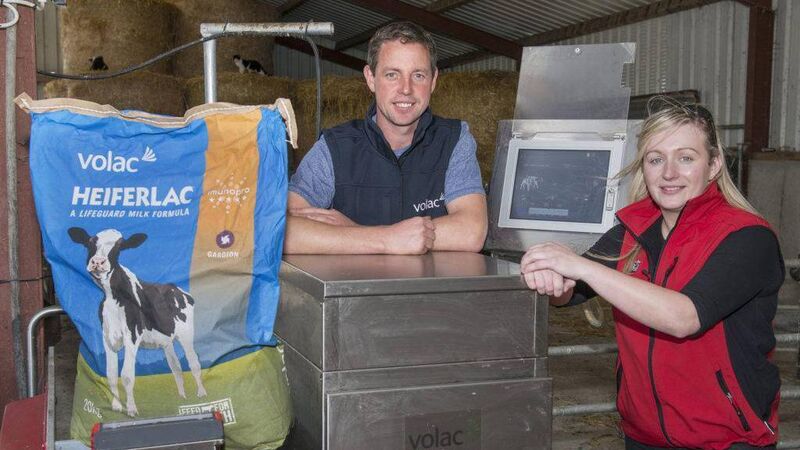
Andrew Cussen and Volac’s Sharon O’Donoghue. Volac recommends that calves can be moved onto an automatic feeder when they are one week of age.
An investment in a computerised (automatic) calf feeding machine can bring greater control and consistency to the rearing period; they can also reduce the time and labour required to rear calves. However, to be effective, good hygiene standards and sound overall management are the critical success factors.
According to Una Hickey, Volac’s National Sales Manager, Ireland, the technology available from automatic feeders is advancing all the time, but the key to getting the most out of these innovative machines is attention to detail.
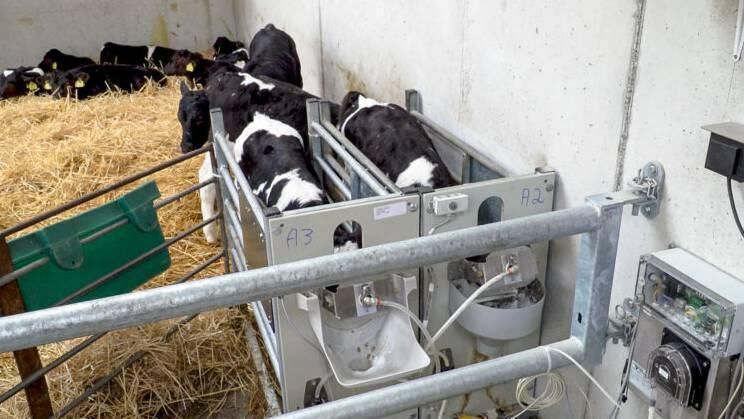
“Rearing calves on an automatic feeder can definitely make calf milk feeding easier and more time-efficient, but it is not an alternative to spending time with the calves. It is essential that feeders are maintained well and that you still observe calves regularly for signs of any problems, such as disease.
“Essentially, we advise farmers that when you make the switch from manual to automatic feeding you will still be spending a similar amount of time with your calves, but what you will not be doing is spending this time moving the milk around in buckets. View an automatic feeder as a way of smoothing out the potential variables in the rearing process (such as inconsistent calf formula mixing rates and milk feeding temperatures), not a short cut to better animal husbandry,” she says.
Farmers buying a new automatic feeder typically tend to install them into existing sheds rather than into new, bespoke calf rearing housing.
“First and foremost, make sure you have the right number of feed stations for the number of calves you want to feed. Regardless if the building has been used for rearing calves before, it is important to spend some time making sure ventilation and drainage are up to scratch.
"Ideally, pen floors need to slope from the back to a drain at the front (a 1-in-20 fall is ideal) to ensure the calves are always kept in a clean, dry environment.”
Una points out that most automatic calf feeding machines will do two hot washes a day, which means about 10 litres of water will be used.
“When sorting out your drainage, this needs to be considered too.”
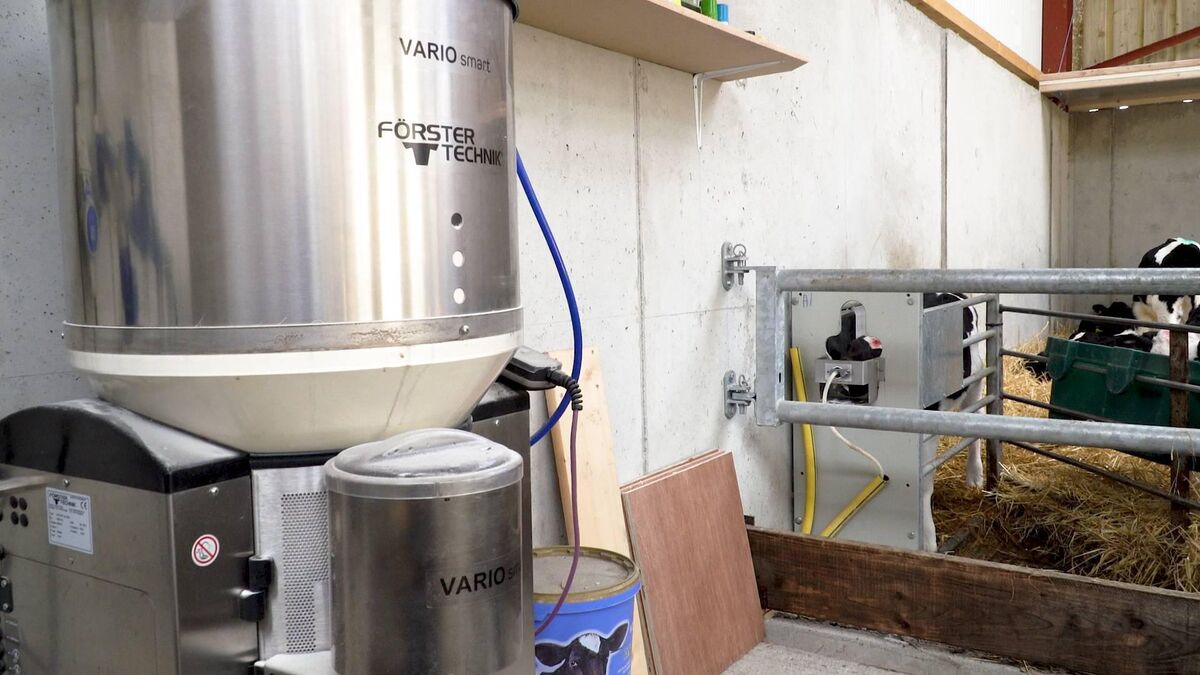
Volac recommends that calves can be moved onto an automatic feeder when they are one week of age, by which stage the calf should be able to take easily to the feeder and cope well with the move.
“As with all calf feeding systems, we advise our farmers to ensure calves are fed sufficient high-quality colostrum as soon as possible after birth. This means giving them three litres within two hours after birth, followed by another similar sized feed within six to 12 hours after birth. After this they should be introduced to a good quality milk replacer before moving onto the feeder at seven days of age.”
Initially, the calf should be able to access a total of six litres of performance-formulated milk powder ‘little and often’ – for example, three two litre feeds during a 24-hour period.
“You can programme the feeding curve on the machine, which makes life a lot easier. What’s more, maintained well, automatic machines such as those supplied by Forster Technik and Urban, will always mix calf milk replacer accurately with water and also ensure that the milk is always delivered to the calf at the correct temperature.
“Heifer calves that you want to calve down at 23-25 months of age need to be gaining 0.7-0.8kg per day, which means you need to be feeding a minimum of 750-900g per day of good quality milk formula, such as Volac’s Lifeguard range, to hit this target. This will continue until the calf has been on the feeder for 35 days and then the weaning process should begin,” Una says.
Computerised systems linked to EIDs can collect individual calf data on milk intakes and drink speeds. “If you have weigh cells, which are available when installing feeding stations, you can also record a weight every time the calf feeds. This also makes life easier because you will not be handling calves separately to weigh them.”
Volac advises gradually reducing the amount of milk offered to calves, over a three-week period between days 35 and 56 (see figure 1, below). This encourages starter intake, helps rumen development and improves the ability of the calf to digest nutrients after weaning.
“For the high milk-fed calf we now recommend a three-week weaning period between days 35 and 56 where milk replacer is fed at ≤ 750g milk solids per day to ensure calves eat enough starter to allow for sufficient rumen development,” says Volac calf rearing specialist, Liam Gannon.
Calves that are fed more milk over the first five weeks of life will be bigger and more vigorous. These calves will subsequently eat more starter when milk is gradually reduced from day 35 to 56. What’s more, calves fed more milk, coupled with good starter intakes, will be more likely to achieve their early growth targets and lifetime milk production potential.
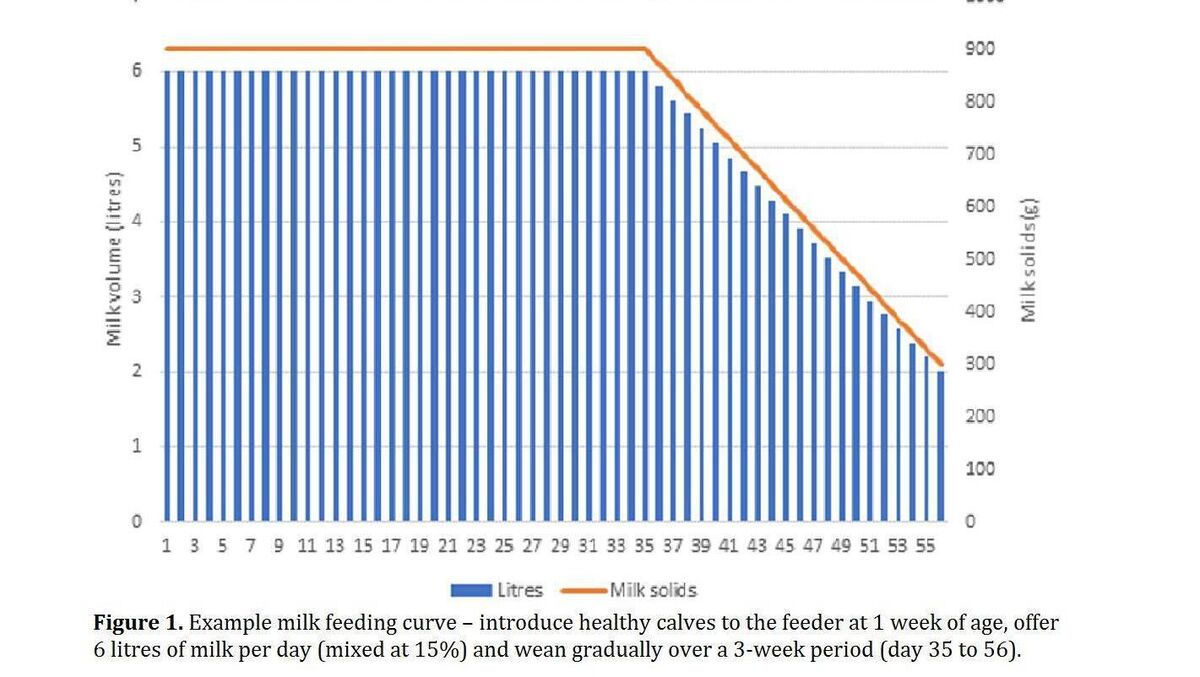
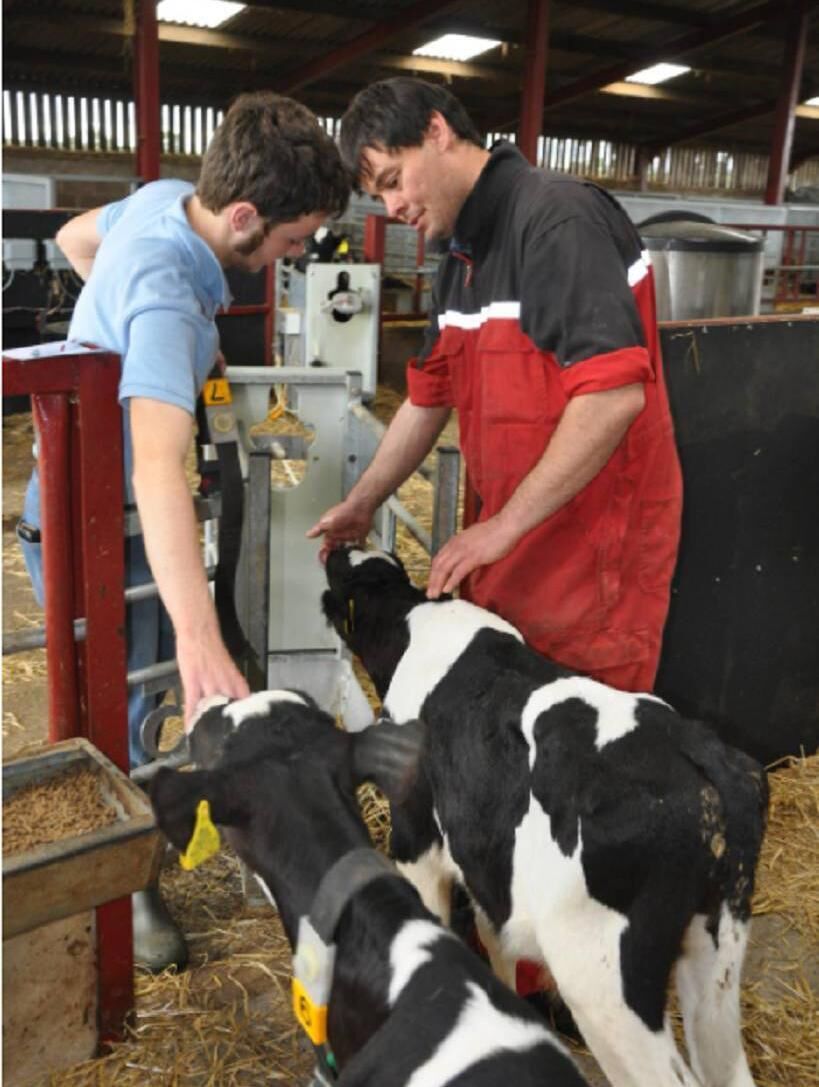
Computerised calf feeding can transform your dairy or beef youngstock rearing operation. Installing a new computerised machine will certainly be a worthwhile, labour-saving investment and will release time to focus on calf health and management.
However, attention to detail in a few key areas will be crucial if you are to maximise calf performance:
Spend time familiarising yourself with your computerised calf feeding machine and make the most of all its various functions. Purchase only precision-formulated milk powder for your machine, such as a product from the Volac Lifeguard range.
Issues with calibration may mean calves are under or overfed and variations in the concentration of milk being dispensed can have a negative effect on the health and performance of your calves. Consequently, calibrate your machine to ensure accurate mixing of milk formula and check this calibration every four weeks, or when a new batch of milk powder is started.
Always keep the dispenser areas clean and wiped daily.
Dry sweep areas around calves. Refrain from using a hose, especially a pressure hose, as this will damage the machine and create a wet environment around the feed station, which will encourage bacterial growth.
Check your machine daily to make sure it is performing at an optimal level. React to any warning alerts. Be mindful of the weather: for example, pipes may freeze if very cold conditions, so make sure you have a contingency plan for these eventualities.
Good teat hygiene is crucial. Clean and change teats regularly. Damaged or worn teats should be replaced immediately as they can disrupt milk flow and harbour bacteria. Teats can be soaked in a solution of disinfectant and replaced in the morning and afternoon. It is good practice to alternate the station teats daily.
Run the in-built cleaning cycle programme regularly. Full circuit cleaning should be performed at least once a week. Clean the machine thoroughly between each batch of calves.
If you identify any repeated issue with a machine (e.g. not cleaning or calibrating properly), contact the equipment supplier or your service engineer.
Ensure you always follow manufacturer cleaning and maintenance instructions.
Make sure your machine is serviced annually.







